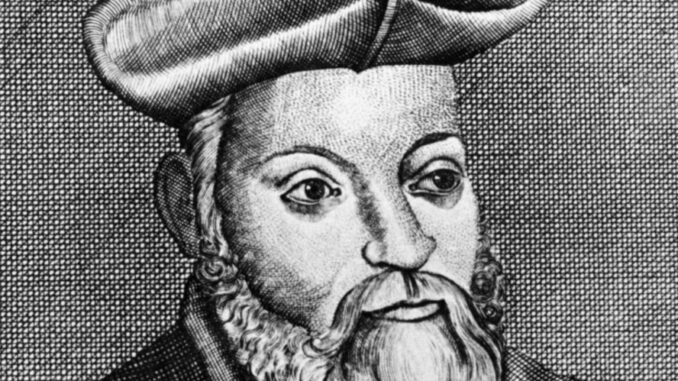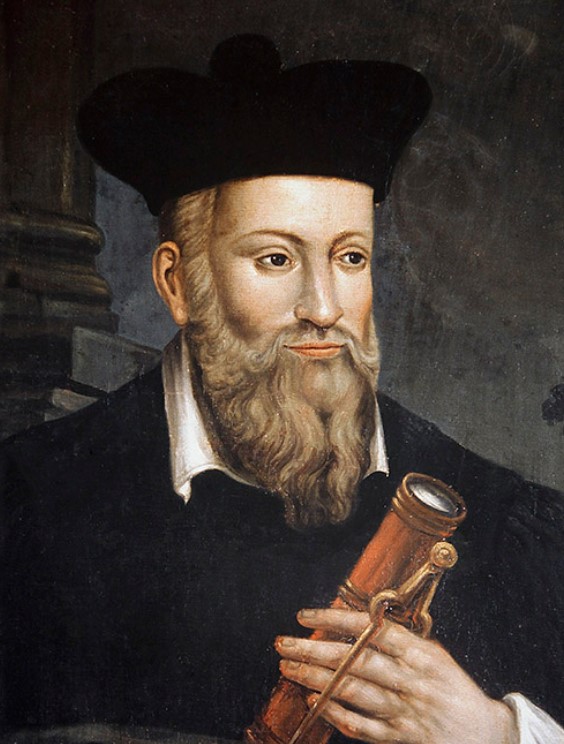
Michel de Nostredame, usually Latinised as Nostradamus was a French astrologer, physician, and reputed seer. Nostradamus was best known for his book Les Propheties, which was first published in 1955. It is a collection of 942 poetic quatrains that allegedly predicted future events. He allegedly predicted some of the popular events that took place in the future. Popular authors claimed that he predicted some of the major events that happened at the time of each book’s publication, such as the Apollo moon landings in 1969, the Space Shuttle Challenger disaster in 1986, the death of Diana, Princess of Wales in 1997, and the September 11 attacks on the World Trade Center in 2001.
Nostradamus made headlines in 2021 with some claiming that he predicted the COVID-19 pandemic in the 16th century. Nostradamus’s viral quote went viral over social media. The claims include a prophecy written by Nostradamus out as follows: “There will be a twin year (2020) from which will arise a queen (corona) who will come from the east (China) and who will spread a plague (virus) in the darkness of night, on a country with 7 hills (Italy) and will transform the twilight of men into dust (death), to destroy and ruin the world. It will be the end of the world economy as you know it.” However, it is not verified that the quote came from Nostradamus.
This article depicts Nostradamus’s life story, prophecies, family, death, and aftermath to this date.

Source: @nostradamusmusical
What is Nostradamus Famous For?
- His book Les Propheties.
When was Nostradamus Born?
Nostradamus was born in December 1503. His exact date of birth is not known. His birth date is reported on 14 or 21 December. He was born in Saint-Remy-de-Provence, Provence in the Kingdom of France. He held French nationality. He was born to his father, notary Jaume de Nostredame and his mother, Reyniere. His family had originally been Jewish but his father converted to Catholic Christian somewhere around 1459-60. After conversion, he took the Christian name “Pierre” and the surname Nostredame”. He reportedly had numerous siblings. Some of his known siblings were Delphie, Jean, Pierre, Hector, Louis, Bertrand, Jean II, and Antoine. In his childhood, he was educated by his maternal great-grandfather, Jean de St. Remy.
Nostradamus Prophecies
- He entered the University of Avignon at the age of 14 to study for his baccalaureate. A year later, he was forced to leave Avignon when the university closed its doors during an outbreak of the plague.
- He then left Avignon and traveled the countryside for 8 years from 1521 researching herbal remedies. He became an apothecary. He entered the University of Montpellier to study for a doctorate in medicine.
- When the student procurator, Guillaume Rondelet discovered that Nostradamus had been an apothecary, he was banned by the university statues. He continued working as an apothecary and became famous for creating a “rose pill” that purportedly protected against the plague.
- Following his wife and kids’ death, he continued to travel, passing through France and possibly Italy.
- He returned in 1545 and assisted the prominent physician Louis Serre to fight the major plague outbreak in Marseille.
- He then fought further outbreaks of disease on his own in Salon-de-Provence and in the regional capital, Aix-en-Provence.
- He finally settled in Salon-de-Provence where he remarried.
- He visited Italy and began to move from medicine toward occultism.
- He wrote an almanac for 1550, for the first time in print Latinising his name to Nostradamus.
- Following the almanac’s success, he decided to write one or more annually.
- They are known to have contained at least 6,338 prophecies, as well as at least eleven annual calendars.
- He began his project of writing a book of one thousand mainly French quatrains, which constitute the largely undated prophecies for which he is most famous today. The quatrains, published in a book is titled Les Propheties (The Prophecies).
- Its first installment was published in 1555 and contained 353 quatrains.
- The third edition, with around 200 quatrains was reportedly printed in 1558. It was published after his death in 1568.
- Most of the quatrains deal with disasters, such as plagues, earthquakes, wars, floods, invasions, murders, droughts, and battles.
- The Almanacs were published annually from 1550 until his death.
- He hinted at unnamed threats to the royal family. Queen Catherine summoned him to Paris to explain them and to draw up horoscopes for her children. He was made Counselor and Physician-in-Ordinary to her son, the young King Charles IX of France.
- A professional healer, he is known to have written at least two books on medicinal science.
Nostradamus Wife and Kids
Nostradamus married a woman when he lived in Agen. The real information about his wife is not known. She is possibly named Henriette d’Encausse. He had two children with his wife. He suffered a tragedy when his wife and kids died in 1534 presumably from the plague.
When he settled in Salon-de-Provence in 1547, he married a rich widow named Anne Ponsarde. He shared three daughters and three sons with Pnsarde. The couple acquired a one-thirteenth share in a huge canal project between 1556 and 1567. The project was organized by Adam de Craponne to create the Canal de Craponne to irrigate the largely waterless Salon-de-Provence and the nearby Desert de la Crau from the river Durance.
Nostradamus Death
By 1566, Nostradamus’ gout, which had plagued him painfully for many years and made movement very difficult, turned into edema. He summoned his lawyer to draw up an extensive will in late June bequeathing his property plus 3,444 crowns. He was reportedly found dead, lying on the floor next to his bed and a bench on the morning of 2 July. He died either on 1 or 2 July in 1566. He was buried in the local Franciscan chapel in Salon but re-interred during the French Revolution in the Collegiale Saint-Laurent, where his tomb remains to this day.
Leave a Reply